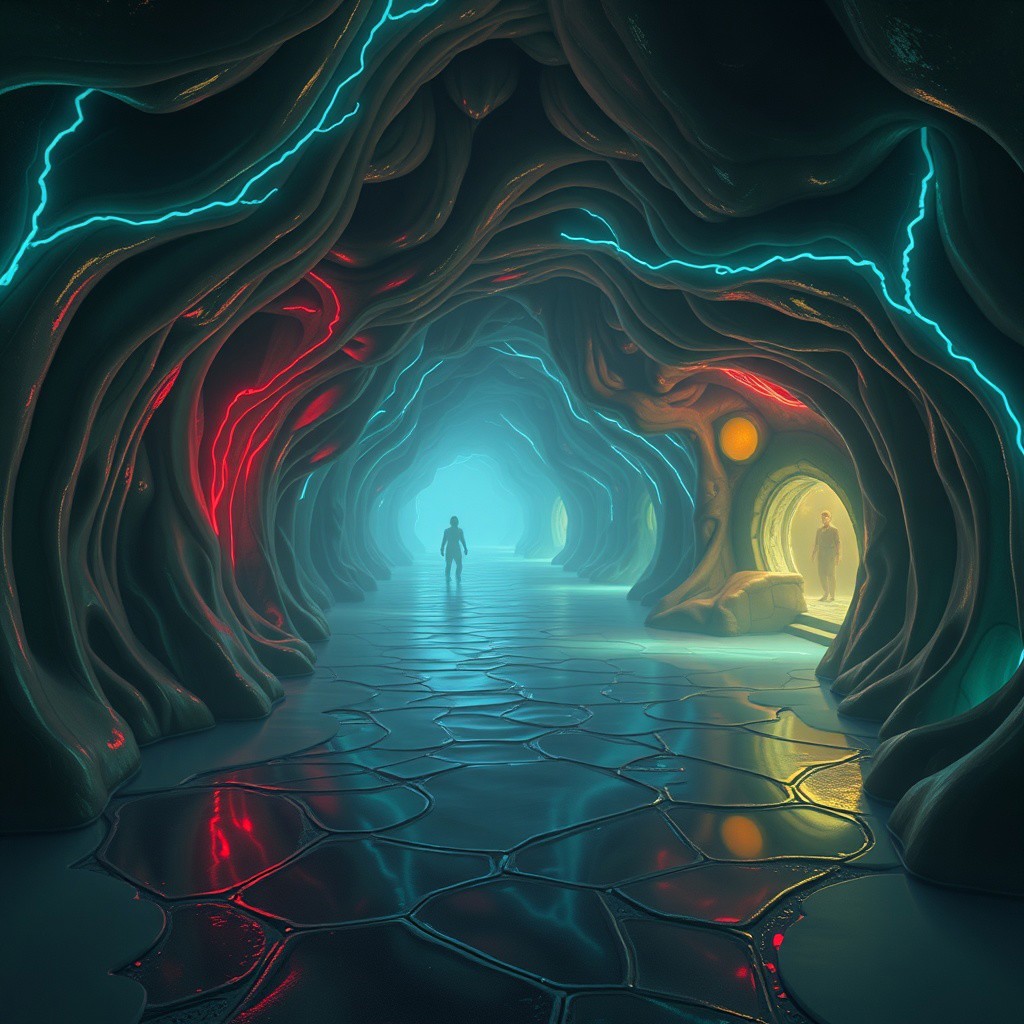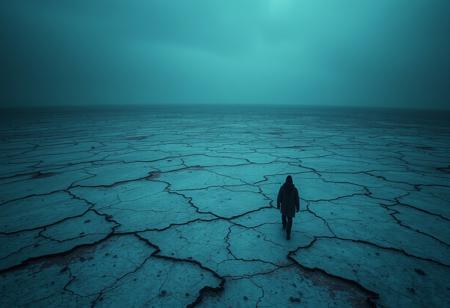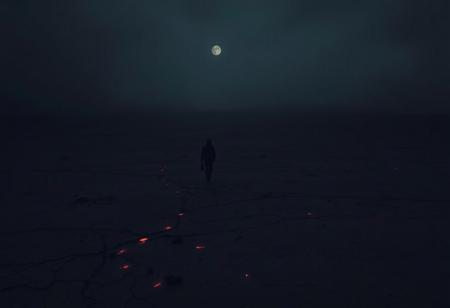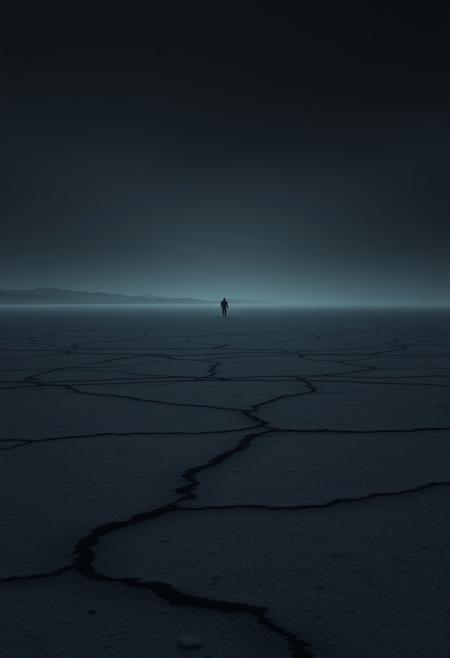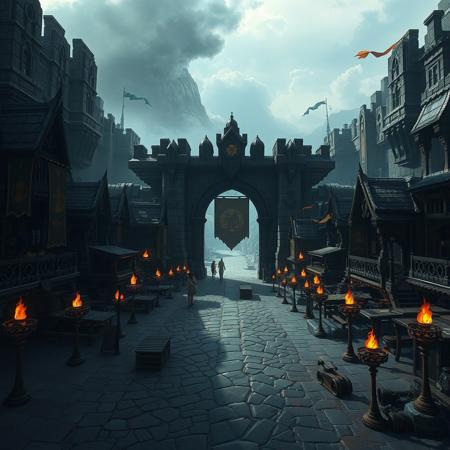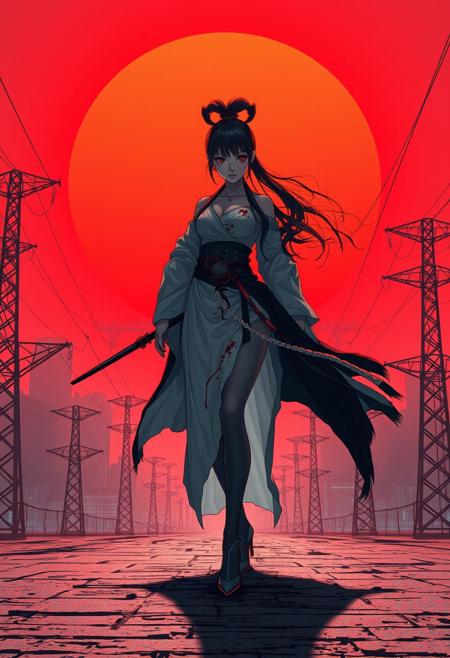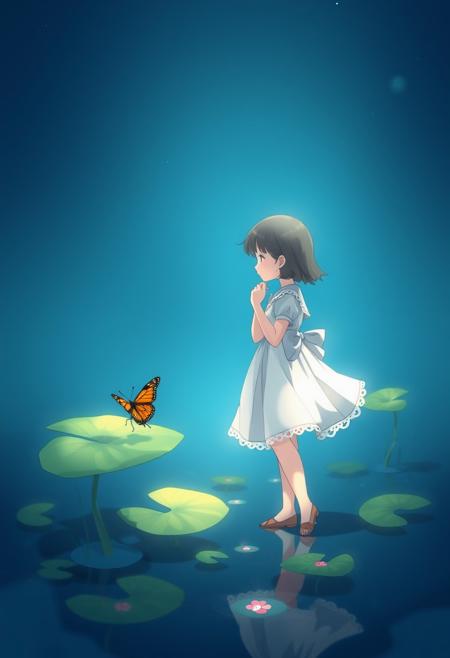A liminal space within the Belly of Jabu-Jabu from The Legend of Zelda: Ocarina of Time—a vast, organic cavern suspended between the living and the inanimate. The fleshy walls pulse faintly, their slick, wet surfaces illuminated by an eerie bioluminescent glow. The air is thick and humid, filled with the distant, rhythmic sound of something deep within, breathing. A translucent, membranous floor stretches ahead, shifting slightly underfoot, as if the temple itself is aware of your presence. Veins of glowing blue and red branch across the walls, pulsating in a slow, hypnotic rhythm. The corridors curve unnaturally, leading into deeper chambers where echoes distort, making it unclear if the sound is coming from ahead or behind. A strange silence lingers, not of emptiness, but of something waiting. Though no creatures stir, the feeling of being inside something vast and alive is undeniable. The space feels endless yet claustrophobic, an otherworldly sanctuary neither hostile nor safe. Here, in this forgotten, organic labyrinth, time and reality feel distant—as if swallowed by something greater than oneself.
